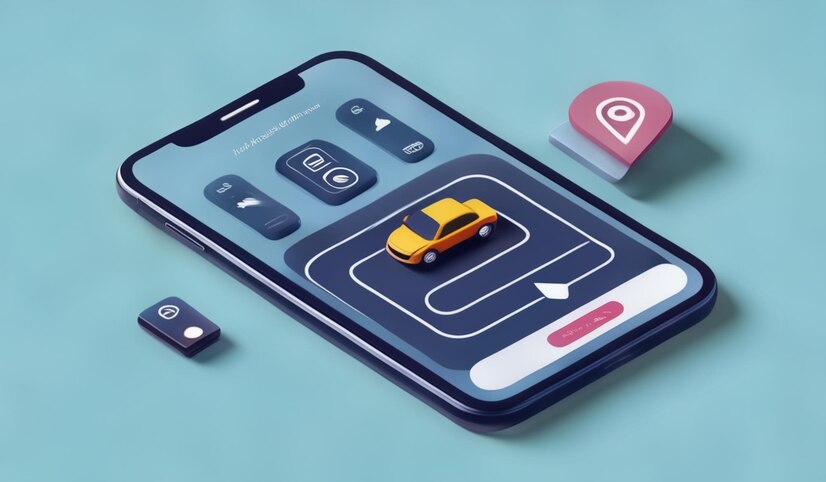Building a successful app requires more than a good idea in the competitive ride-sharing industry. The technical foundation of the app, known as the tech stack, is crucial for its performance, scalability, and security. Choosing the right tech stack for ride-sharing app development can be challenging because it involves decisions that affect how the app functions, how it can scale over time, and the overall user experience.
In this article, we’ll explore how to choose the right tech stack for ride-sharing apps by looking at the major components involved, key factors to consider, and popular tech stack options for building a successful and robust app.
What is a Tech Stack?
A tech stack refers to the combination of programming languages, frameworks, tools, and technologies used to develop an app. In ride-sharing app development, a tech stack can be divided into two main parts:- Frontend (Client-Side): This is what users interact with directly, including the app’s user interface (UI) and design. It includes the technologies used to develop the mobile app or web app.
- Backend (Server-Side): This is the server-side technology that manages the app’s functionality, including databases, APIs, and server management. The backend is responsible for handling ride requests, payments, geolocation data, and user authentication.
1. Understand the Core Features of a Ride-Sharing App
Before choosing a tech stack, it’s essential to define the core features of your ride-sharing app, as these will impact the technical requirements. Common ride-sharing app features include:- Real-time GPS tracking and maps for users and drivers
- Push notifications for ride updates
- In-app payment systems for cashless transactions
- User and driver profiles
- Rating and review systems
- Matching algorithms for ride requests
2. Factors to Consider When Choosing a Tech Stack
Choosing the right tech stack for your ride-sharing app involves considering several critical factors:a. Scalability
A ride-sharing app must handle a growing number of users, drivers, and rides as it scales. Choose technologies that can efficiently manage thousands (or even millions) of concurrent users without compromising performance. Technologies such as Node.js or Go are popular for building scalable backend systems due to their event-driven architecture and fast execution.b. Performance
Performance is crucial for ensuring a smooth user experience. A slow app can lead to user frustration and poor reviews. Opt for lightweight and high-performance programming languages and frameworks. For instance, React Native is widely used for mobile frontend development because of its performance and ability to create smooth, fast interfaces.c. Security
Ride-sharing apps handle sensitive data, including personal information, payment details, and location data. It’s important to choose a tech stack that has robust security features, supports encryption protocols, and prevents common vulnerabilities like SQL injection and cross-site scripting (XSS). For secure payments, frameworks like Stripe and PayPal SDK provide secure APIs for integrating payment gateways.d. Development Time and Cost
The complexity of the tech stack affects both development time and cost. Some technologies are easier to learn and faster to develop with, while others may require specialized skills. Cross-platform frameworks like Flutter or React Native reduce development time by allowing developers to write code that works on iOS and Android devices.e. Integration with Third-Party Services
Ride-sharing apps rely heavily on third-party integrations, including payment gateways, mapping services, and communication APIs for features like SMS notifications. Choose technologies that support seamless integration with services like Google Maps API, Twilio for SMS, and Firebase for real-time communication.3. Choosing the Right Frontend Tech Stack
The frontend of a ride-sharing app must be visually appealing, responsive, and user-friendly. There are several key technologies to consider:iOS App Development:
- Swift: Apple’s modern programming language for iOS development. It provides excellent performance and security features.
- Objective-C: The older alternative to Swift but still used in legacy apps. Swift is recommended for new projects.
Android App Development:
- Kotlin: Google’s preferred language for Android app development. It’s modern, concise, and interoperable with Java.
- Java: The traditional language for Android development, still widely used but increasingly replaced by Kotlin.
Cross-Platform App Development:
- React Native: Developed by Facebook, it allows you to build mobile apps using JavaScript. It’s popular for its efficiency and ability to run the same codebase for both iOS and Android.
- Flutter: Developed by Google, it uses Dart language and offers excellent performance. Flutter is known for its ability to create beautiful, natively compiled applications from a single codebase.
4. Choosing the Right Backend Tech Stack
The backend tech stack handles data processing, ride-matching algorithms, and interactions with the database. It’s responsible for real-time functionality and high-volume requests. Key backend components include:Programming Languages:
- Node.js: A popular choice for real-time applications. It is based on JavaScript and has a large developer community. Node.js is scalable and handles concurrent connections effectively.
- Go (Golang): Known for its speed and efficiency, Go is a strong option for large-scale systems like ride-sharing apps.
- Python: Python is easy to learn and widely used for backend development. Frameworks like Django and Flask simplify development.
Databases:
- MongoDB: A NoSQL database that handles unstructured data. It’s highly scalable, which is essential for real-time data.
- PostgreSQL: A powerful relational database system that supports complex queries and is reliable for transactional operations.
Server:
- AWS (Amazon Web Services): Provides scalable and secure cloud hosting solutions. AWS offers a range of services like EC2 for compute power and S3 for storage.
- Google Cloud: Another cloud platform that provides scalability, real-time analytics, and secure infrastructure.
APIs and Real-Time Communication:
- Firebase: Provides real-time database management and synchronization between users and drivers.
- Socket.io: A JavaScript library enables real-time, bidirectional communication between the front and back end, which is critical for real-time updates in ride-sharing apps.
